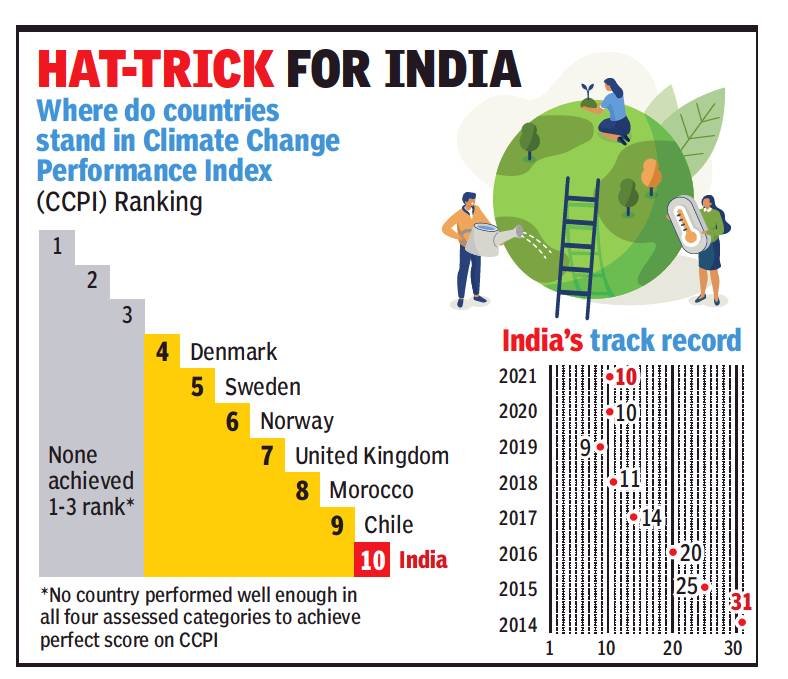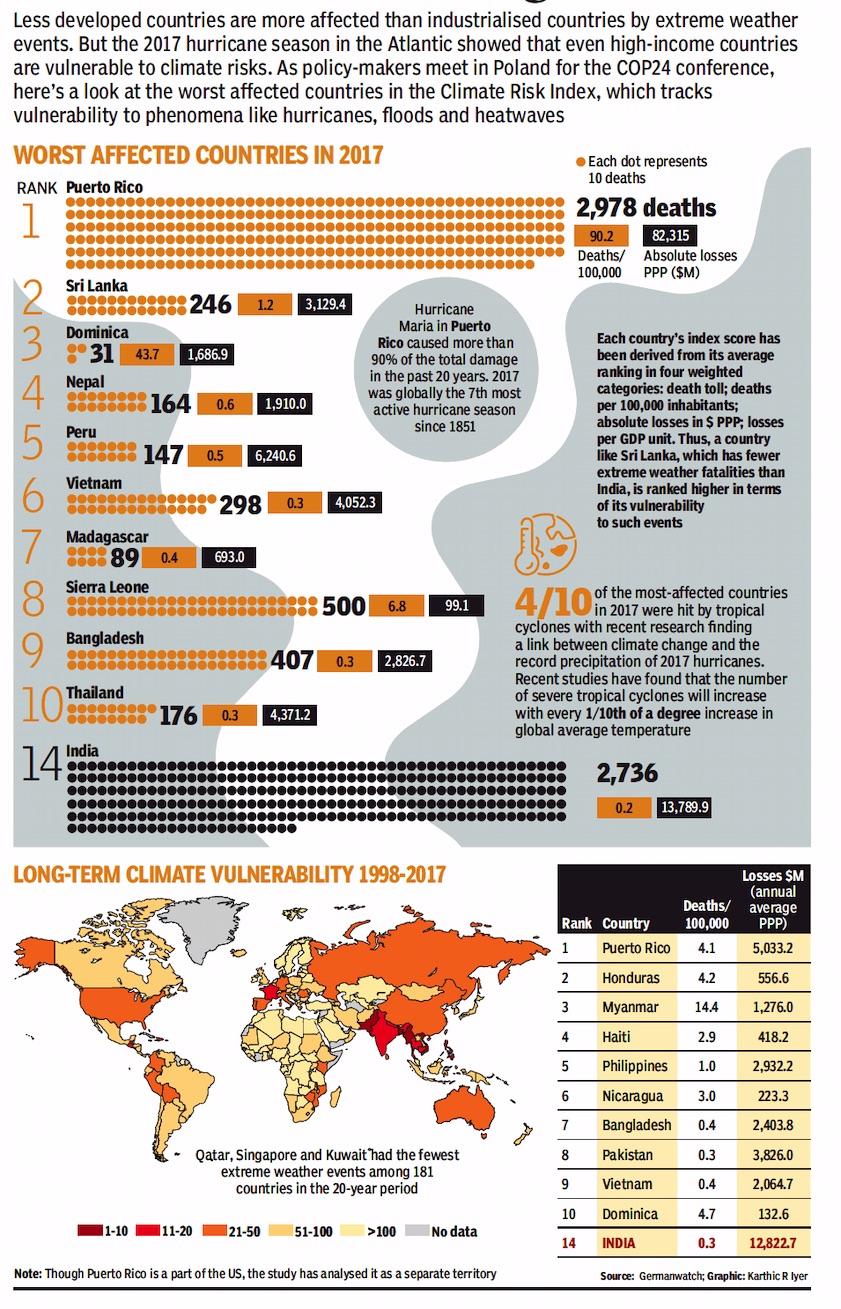Climate risk and South Asia
This is a collection of articles archived for the excellence of their content. |
Contents[hide] |
Climate Change Performance Index
2014-21

From: Vishwa Mohan, Nov 10, 2021: The Times of India
See graphic:
India’s rank on the Climate Change Performance Index, 2014-21
2017

From: Vishwa Mohan, In 2017, India second worst in extreme weather deaths, December 5, 2018: The Times of India

From: December 5, 2018: The Times of India
But Better Forecast & Disaster Response Systems Help Country Improve Ranking On Global Climate Risk Index
India was globally the 14th most vulnerable country to climate risk in terms of extreme weather-related losses in 2017, improving its tally from sixth in 2016 and fourth in 2015. But the country was ranked second for fatalities suffered in such weather-related events.
India had hit its lowest vulnerability position in 2013, when it was No. 3 in the global Climate Risk Index (CRI) rankings, the latest edition of which was released on the sidelines of the UN climate conference at Katowice in Poland on Tuesday.
Though India took the second spot in terms of absolute numbers of lives lost, reporting 2,736 deaths in 2017 against 2,978 fatalities reported in Puerto Rico — which held the top spot — its fatalities per one lakh inhabitants and its losses per unit of GDP are not that high. These parameters made it less vulnerable than even the US, which is ranked 12th in the vulnerability list of 181 countries in 2017.
“The CRI indicates a level of exposure and vulnerability to extreme events that countries should understand as warnings in order to be prepared for more frequent and/or more severe events in the future,” said the briefing paper of the latest global CRI, released by the Berlin-based independent organisation, Germanwatch.
The paper shows that the world lost 11,500 human lives and reported economic damages worth approximately $375 billion (calculated in purchasing-power parity terms) in 2017 alone, the highest ever recorded.
India figured at No. 14 both in 2017 and over the 20-year period (1998-2017) in terms of facing the impact of extreme weather events. The CRI takes into account the number of deaths, number of deaths per one lakh inhabitants, extent of financial loss and loss per unit of GDP due to weather events such as floods, cyclones, hail, tornados and heat and cold waves.
India’s improved ranking in 2017 can be attributed to the country’s expertise in predicting cyclones quite accurately and the gradual improvement in its disaster response system.
“India has improved its prediction capability over the years. We are in a position to forewarn people three days in advance and that’s helped us to save lives during extreme weather events,” said Madhavan Rajeevan, secretary of the ministry of earth sciences (MoES).
India hit its lowest CRI ranking in 2013 due to the heavy loss of life and property in the Uttarakhand flash floods. The Kerala floods this year may, however, affect its ranking next year. So, the CRI based on 2018 data will point to the country’s climate preparedness as compared to other vulnerable countries across the globe.
Puerto Rico, Sri Lanka and Dominica suffered the most in 2017 while Puerto Rico, Honduras and Myanmar were impacted the strongest in the 20-year period from 1998 to 2017. In this period, globally, over 5,26,000 fatalities were directly linked to more than 11,500 extreme weather events. Besides, the world suffered economic damage worth approximately US$ 3.47 trillion (calculated in PPP) during the same period.
The vulnerability of poorer countries becomes visible in the long-term index, in which eight of the 10 countries most affected between 1998 and 2017 are developing countries with low or lower middle income per capita.
“But industrialised and emerging economies must also do more to address climate impacts that they themselves feel more clearly than ever before. Effective climate protection as well as increasing resilience is therefore also in the self-interest of these countries,” said lead author of the index, David Eckstein, citing the example of the US, which was ranked 12th in the 2017 index, reporting 389 fatalities and $177.9 billion in losses due to extreme weather conditions.
India figured at No.14 both in 2017 and over the 20-year period in terms of facing the impact of extreme weather. It hit its lowest CRI ranking in 2013 due to the heavy loss of life and property in the Uttarakhand flash floods. The Kerala floods this year may, however, affect its ranking in the next index